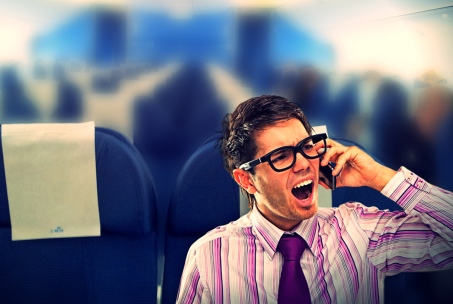This past week I was on the Grandeur of the Seas cruise ship (see below), operated by Royal Caribbean International.


I went on the cruise during spring break with 12 of my friends (male and female) from college. The schedule of the cruise was as follows:
- Day 1: Cruising
- Day 2: Cruising
- Day 3: Stopped in Port Canaveral, Florida
- Day 4: Stopped in Cococay, Bahamas
- Day 5: Stopped in Nassau, Bahamas
- Day 6: Stopped in Key West, Florida
- Day 7: Cruising
- Day 8: Cruising
This was the first cruise I had ever been on, and my expectations were high. This post is a full review of the cruise experience I had, ranking categories from 1-10, 1 indicating extremely poor quality, and 10 indicating extremely high quality.
COMFORT AND CLEANLINESS – 9
One thing I had heard about cruises was how the rooms were small, claustrophobic, and uncomfortable. I was pleasantly surprised that this was not the case. While the rooms were smaller than a standard hotel room, they were comfortable and had everything I needed. There was plenty of cabinet, closet, and drawer space, the bathroom was small but not crammed, and there was even room for a mini couch. The room attendant knew both my roommate’s name and my name on the first day, and cleaned the room twice a day, making sure to come when he knew we were out of the room.
The rest of the ship was kept very clean. Tables in the dining areas were wiped down almost immediately after a party was finished eating. Other public areas on the ship were also quickly cleared of any trash or glasses left behind. In addition, hand sanitizer was available all over the ship, with attendants often encouraging people to use it before meals.
All in and all, the cruise was very comfortable and clean.
FOOD – 7
The best part of the food on the cruise was the variety. There were multiple dining halls, a more formal dining hall, as well as a few restaurants with specific cuisines. The menu changed constantly at the dining halls, always offering different cuisines and many options. The menus also accommodated people who were vegetarian or gluten free.
The quality of the food on the ship was good, nothing more, nothing less. I was not expecting the food to be outstanding, since it was mass-produced. Some dishes were great, a few were mediocre, but the majority were good. You should not be expecting the best meals of your life on a cruise, but you should expect some quality food with all sorts of variety.
SERVICE – 9
The service on the cruise was fantastic. All of the staff were extremely polite and helpful. Whether it was questions about a boarding procedure, the schedule for the next day, or anything else, the staff was eager to help.
ACTIVITIES AND FACILITIES – 7
The variety of activities offered throughout the cruise was great. There were bingo games, art auctions, movies, comedy shows, musicals, orchestra performances, Ping-Pong tournaments, fitness classes, a belly flop competition, casino games, bars, and more. With different activities on different days, it was almost guaranteed that there were activities for any cruise-goer.
The facilities were either very good or below average. The theater where movies and shows took place was huge, with comfortable seats and plenty of room so that it was not too crowded. The casino was also pretty big, resulting in little waiting around to play table games. One example of the below average facilities was the pool. While I was expecting a big pool since the cruise had a capacity of over 2,000 people, it was quite small, with its size more appropriate for a backyard than for a cruise ship.
STOPS – 8
One thing I learned about going on a cruise is that the stops are the highlight of the trip. Because of that, it is necessary to make the most of these stops by getting off of the cruise for as long as possible.
The process for getting on and off the boat at these stops was often annoying and time consuming. People who were doing excursions usually departed first, so one day when the ship was scheduled to arrive at 9:00 A.M., I could not get off until 10:30 A.M. because I was not on an excursion. At another stop, everyone had to get cleared by United States Immigration Services before leaving the ship. This was conducted on the boat, and it only took a few minutes for officers to check a passenger’s passport. However, the waiting to actually see the officers took over an hour because of how poorly the process was organized by the cruise. This was very frustrating, as it took valuable time away from a fun stop.
The stops themselves were fantastic. There was always plenty to do, and a large variety of excursions were offered, which ensured any individual or group could find something fun. Most stops had easy access to tremendous beaches. This entirely made up for the annoyances mentioned above, because the experiences off of the ship completely overshadowed any earlier frustration.

PRICE – 6
While the price of a cruise varies upon the ship, cruise line, room type, and more, you should know there are many hidden fees that come about. To learn how to best compare cruise prices, go here.
My cruise payment included the room and unlimited food. I expected to purchase an excursion or two, as well as maybe buy a few alcoholic beverages on board, but otherwise did not foresee many other costs.
How wrong I was. There was an automatic $12 gratuity charged each day, which meant almost $100 more added to the cost of the cruise. Then during the stop in Nassau, there was not too much to do besides look at local shops. This made it somewhat of a necessity to purchase an excursion, tacking on an additional $50-150 depending on what excursion a passenger wanted to do. As expected, alcohol on the cruise was very expensive, with an $8 bottle of wine costing $30 at dinner. But soda and sweetened drinks costed extra as well. To obtain these drinks, a drink package had to be purchased, which cost a certain amount per day for an unlimited amount of drinks. However, you had to purchase the package for at least four days, so a beverage package would become a somewhat expensive investment.
Some activities on the ship cost money, and were at times shockingly expensive. For example, I wanted to play bingo one day. You had to buy a bingo card, and then the winner received a cash prize. I was excited to play, until I found out the cheapest bingo card was $32, which combined with a low chance of winning, seemed like a dumb price.
OVERALL EXPERIENCE – 8
Overall, I enjoyed the cruise. While the days spent cruising were not the time of my life, each of the stops were an absolute blast. Whether it was sitting on the beach, snorkeling, or spending quality time with friends, there was all sorts of fun to be had, which is always what I look for in a vacation. As a bonus, I experienced some things I never had before, which is one of the best aspects of traveling. The cruise, and thus my spring break, was something I’ll never forget.





















